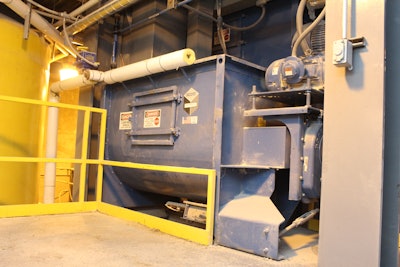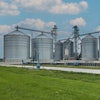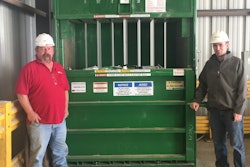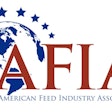
Even before the onset of the FDA’s Food Safety Modernization Act (FSMA) animal feed mills and manufacturing facilities have worked to ensure quality assurance for their customer base. By today’s standards, risk abatement is just as important to a mill’s bottom line as is the accurate feeds they supply to farms.
“It is more vital now than ever that mill and facility managers find means to capture and document the ingredients and feeds they oversee,” says Lauren Meyer, Rock River Laboratory Quality Control and Mill Quality Assurance Director. “Quality assurance at the feed mill level incorporates three key pieces - sampling and analyzing incoming ingredients, sampling and analyzing feed and mineral mixes, and finally sampling and analyzing the final products.”
To help mill and manufacturing facilities mitigate risk and help their bottom line, Meyer recommends four core aspects for managers to focus on:
Review ingredient supply accuracy and safety
Laboratory analysis of supplied ingredients can not only ensure that the product fulfils the order correctly, but assists in the ‘quality in, quality out’ mantra as mills create custom mixes.
“Identifying potential hazards is the first step in mitigating risk,” says Meyer. “Checking the ingredients provided by a supplier through regular sampling and analysis is one of the best places to start.”
Toxins, mineral deficiencies, and excessive minerals can play a part in rendering an ingredient unfit or in some cases lethal to animal consumption. Less extreme hazards can also cause challenges. Meyer cites that in some such cases, their laboratory analysis of ingredients has been able to identify when manufacturing facilities are supplied with the wrong product.
“In one case, a mix was testing high for a certain mineral. We called the client and the irregular level helped them uncover that their supplier was sending them the wrong mineral.”
Secure and take advantage of accurate feed formulations
提供原料一直在检查后,Meyer recommends securing the accuracy of the mixes produced at the mill or manufacturing plant. Reviewing protein, minerals and salt is a great place to start, but checking the mixing equipment is also important.
“A mixer evaluation test can help decipher if the mixers on-site are precisely spreading all ingredients equally across the mix,” explains Meyer.
The mixer evaluation analysis measures the zinc and manganese in ten different samples throughout a mix, comparing them against each other and the expected levels. This assessment identifies the proper distribution of ingredients and provides standard deviations to improve mixing. Meyer explains that formulating feeds accurately can also help mills take advantage of high-component ingredients.
“Various mills that have analyzed their ingredients have sometimes found ingredients to be higher in certain components than what was originally expected,” says Meyer. “For instance, a typical 46.5 percent protein soybean meal may test at 50 percent. That mills can now accurately create a mix that hits all the exact protein and fat levels requested by the end user, but the mill has to use less of the ingredient.”
In such cases, everyone wins. The mill can enjoy getting more bang for their buck on the ingredients and the farmer gets the exact mix they were expecting.
Capture data for quality assurance credibility
While risk abatement is what a mill manager sees, the producer customers see quality assurance they can depend on when they work with a mill or manufacturing facility.
“The easiest way to showcase your facility’s attention to quality assurance – be it to new or prospective customers - is through data,” explains Meyer. “Trust is built on credibility and regular analysis captures the data to build that credibility.”
Keep records that translate from the mill to the farm and supply chain
All the data collected from supplier ingredients and mixes can turn into a mess if it isn’t handled correctly. Facility records need to not only be readable to the manager but also track between supplier, to mill, to farm. As restrictions tighten and checks become a regular part of the mill and manufacturer feed business, it’s important for managers to track and record ingredients from entry to exit and even to the animals that consumed them.
“Find an analysis partner that can make your record keeping seamless and easy,” suggests Meyer. “It will be worth your time to work with a laboratory or consultant that can organize all the data you’re collecting and ensure that if you have to prove something, the right information is captured, in the right place and is easy to follow through the full process.”
Meyer reiterates that records must follow a sample all the way from the mill to the farm, so ensuring the batch has the same identification throughout the process is vital.
“No manager wants to face a lawsuit; they deplete time and money and ruin reputations,” says Meyer. “The better the records the easier it is to squash a lawsuit before it even gets to the courts.”
当风险减轻通过将过程place to proactively ensure the quality of all feedstuffs, mill managers can have greater confidence to sell their facility’s capabilities and dedication to quality assurance. As Meyer warrants, “when the proactive pieces are already in motion, compliance and money savings happen naturally.”





















